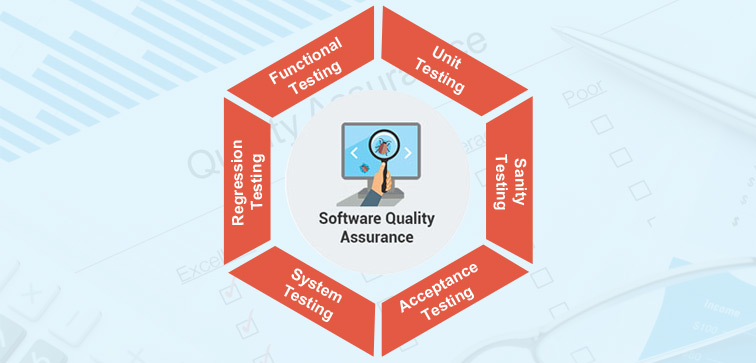What is Quality Assurance & Why is it needed?
 May 15, 2017
May 15, 2017 Software Development Services
Software Development Services
Before labeling any work as complete we all go through it at least one last time to make sure the tasks completed are satisfactory and without any error. Same is the case, when we develop any software or application; it requires a thorough testing and analysis. Quality Assurance or QA testing is referred to strategized set of activities and steps that verify & ensure that the target software is free from glitches, bugs & errors or defects.

Seldom will you come across an application or software that is completely bug-free or doesn’t have any routine glitches. Hence, it is imperative to get the developed software thoroughly tested before it is launched and released. Software quality assurance or QA testing is performed in different types of software models. Quality Assurance testing is done on each phase of the software development so that quality product can be developed that can meet the desired requirement. Various functions and goals of Quality Assurance testing would be as given below:
- Through Quality Assurance it is made sure that defects are reduced.
- Risk identification is another function that is performed through SQA.
- QA is done to assure that business standards and requirements are met by maintaining the quality of the developed software or application.
- Taking essential measures for defect prevention.
- Testing software fault tolerance and maintaining reports & remarks.
The aim of QA testing is to remove faults and defects throughout the development phase of the software. Quality Assurance testing is considered mandatory during the software development cycle for it will guarantee the quality of the final product as well as the workflow. Below we are defining software testing types:
- Black box testing: These are requirement and functionality based QA testing in which internal system design is not included.
- White box testing: White box testing is also referred as the Glass box testing. The tester must be proficient and aware of the internal software as well as working of project codes. This Quality Assurance test involves code statements, paths, conditions and branches.
- Unit testing: For unit testing, complete knowledge & understanding of internal program design and code is required and therefore this type of testing is generally carried out by a programmer.
- Incremental integration testing: In this type of testing approach continuous and repeated testing is done whenever a new functionality is added to the target application. It is also known as bottom-up approach for Quality Assurance testing. The modules and application functionality should be independent so that they can be tested individually.
- Functional testing: Functional testing mainly focuses on the output (which should be according to the requirement).
- System testing: As the name suggests, it is the complete system testing approach to make sure desirable requirements are met.
- End-to-end testing: It is an overall testing of the application environment and evaluating its performance in real-world like scenario, for instance, using network communications, interacting with database, applications, systems or hardware.
- Sanity testing: It is the initial level testing to ascertain if the application is stable enough for further major testing.
- Regression testing: It is a type of complete application testing to check for the modification done in functionality or module.
- Acceptance testing: This type of testing is performed either by the user or the customer to determine if the application is acceptable. Through acceptance testing we check if application meets the customer requirements.
- Load testing: It is to check the behavior of software or application and system response time under heavy loads.
Conclusion:
Quality assurance is the systematic approach for maintaining the quality of the developed application by avoiding failure and improving the functionality of the software that can benefit the business. Outsourcing these services is a smart option if you are running short on time and money.

popular post
-
5 Key Guidelines To Master Intuitive UI Design

-
Top 8 Web Design Trends for 2020

-
Top 7 Mistakes You Can Avoid When Outsourcing Mobile App Development

Categories
- Internet Marketing (13)
- Software Development (8)
- Mobile Apps Development (44)
- Web Designing (32)
- Web Development (60)
 business@midaswebtech.com
business@midaswebtech.com


